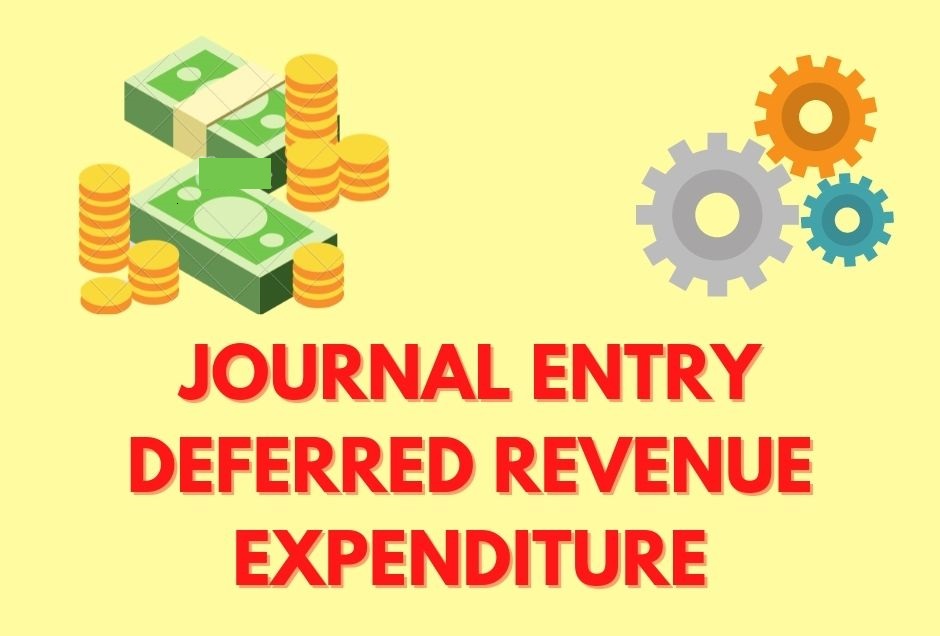Journal Entry Deferred Revenue Expenditure in Accounting
Table of Contents
ToggleJournal Entry Deferred Revenue Expenditure
Journal Entry Deferred Revenue Expenditure
Deferred Revenue expenditure is that expenditure which is revenue in nature but the benefits of those are derived over a number of years. The benefits of such expenditure last generally for a period of 3 to 7 years.
Deferred revenue expenditure is not completely debited to to Profit and Loss Accounts but part of it is shown in Profit and Loss Accounts . The deferred revenue expenditure is spread over the number of years for which the benefits is likely to last. Thus, only a part of such expenditure is taken to Profit and Loss accounts every year the unwritten-off portion is allowed to stand on the assets side of the balance sheet.
Example :
A firm spent a huge amount of Rs 200000 on Advertisement to introduce a new product in the market and it is estimated that its benefits will last for 4 years. In such a case, Rs 50,000 will be charged in the profit and loss accounts of each year for four consecutive years.
Entry will be
Profit and loss accounts A/c | 50,000 |
To Advertisement A/c | 50,000 |
Being advertisement adjusted in Profit and loss accounts | |
Accounting Treatment Rs 50,000 will be shown in the debit side of profit and loss accounts as the expense of Advertisement and remaining Value of Advertisement which is Rs .150,000 is shown in the Asset side of the balance sheet which will be deducted every consecutive year by Rs 50000 in profit and loss accounts and in 1 year its will be Rs 100000 in Asset and Rs 50000 in Profit and Loss accounts similarly in 2 year
Rs 150,000 in assets and Rs 50,000 in Profit and Loss accounts.
Liabilities | Amount | Asset | Amount |
– |
| Advertisement | 150,000 |
In next year 50000 will be deducted from Asset side of Balance sheet and shown in the profit loss account .
Features of Deferred Revenue Expenditure
- It is revenue in nature.
- The benefit of this expenditure lasts for a period of more than one accounting year.
- It pertains wholly or partly for the future years.
- It is a huge amount of expense and thus, is deferred over a period of time.
Key points about deferred revenue expenditure:
Future Benefit:
The primary criterion for classifying an expenditure as deferred revenue is that it’s expected to provide benefits to the company for multiple accounting periods in the future.
Amortization:
Instead of being recognized as an expense all at once, deferred revenue expenditure is gradually expensed over the period during which the benefits are received. This is typically done through amortization, which involves spreading the cost evenly over the expected useful life of the expenditure.
Accounting Treatment:
Deferred revenue expenditure is initially recorded as an asset on the balance sheet under the “Deferred Revenue Expenditure” or “Deferred Revenue Expense” account. As the benefit of the expenditure is realized over time, a portion of the asset is gradually transferred to the income statement as an expense through amortization.
Examples:
Common examples of deferred revenue expenditures include expenses related to advertising, research and development, preliminary expenses for setting up a new business, promotional campaigns, legal fees for long-term contracts, etc. These expenses are expected to yield benefits over an extended period.
Matching Principle:
The concept of deferred revenue expenditure is in line with the matching principle in accounting. This principle aims to match expenses with the revenues they generate, ensuring that financial statements accurately reflect the company’s financial performance over time.
It’s important to note that the treatment of deferred revenue expenditure can vary based on accounting standards and regulations in different countries. Additionally, the specific criteria for recognizing and amortizing deferred revenue expenditures might differ from one company to another, depending on their business practices and industry norms. It’s recommended to consult with financial professionals or accountants to ensure proper accounting treatment for deferred revenue expenditures in a specific context.
Difference Capital Expenditure Deferred Revenue Expenditure
1. Capital expenditure benefit period Its benefits accrue for a long time to the business, say for 10 to 15 years.
Deferred expenditure benefits accrue to the business for a future period, say for 3 to 5 years.
2. Capital Expenditure can be conversion into Cash It can be converted into cash at any time as these are usually investments in assets.
We can never convert deferred revenue expenditure into cash.
3. Capital expenditure can be writing off We do not write off them over a period of time.
Deferred Revenue Expenditure can be write off these over a period of 3 to 5 years.

